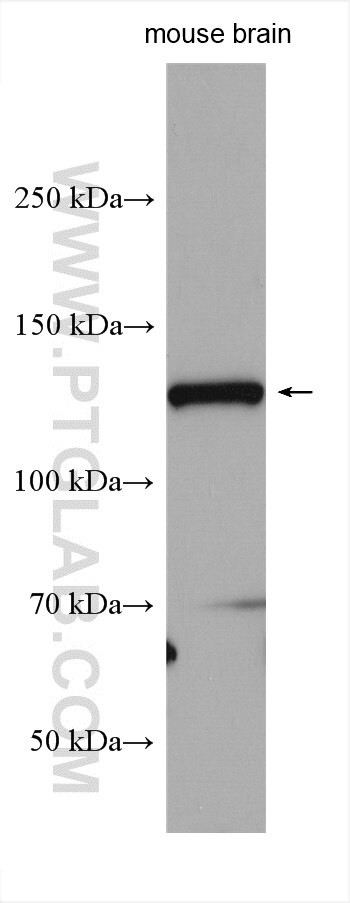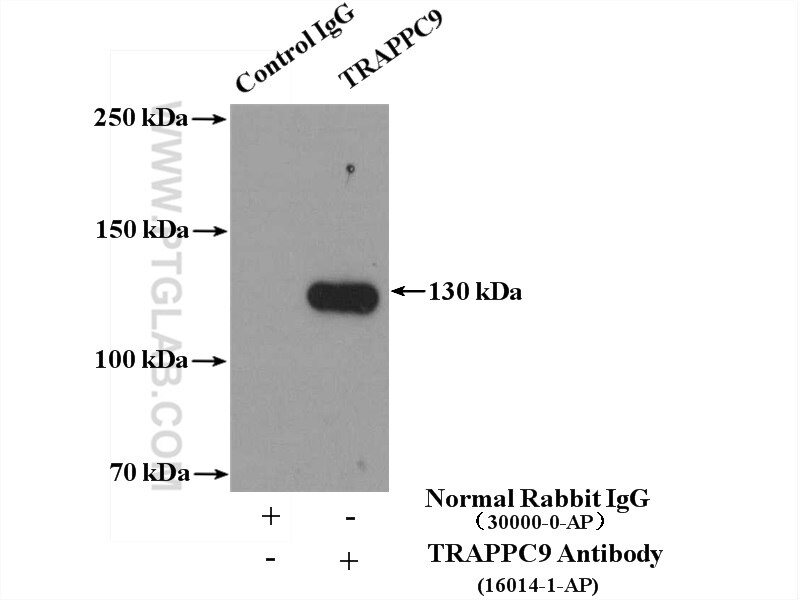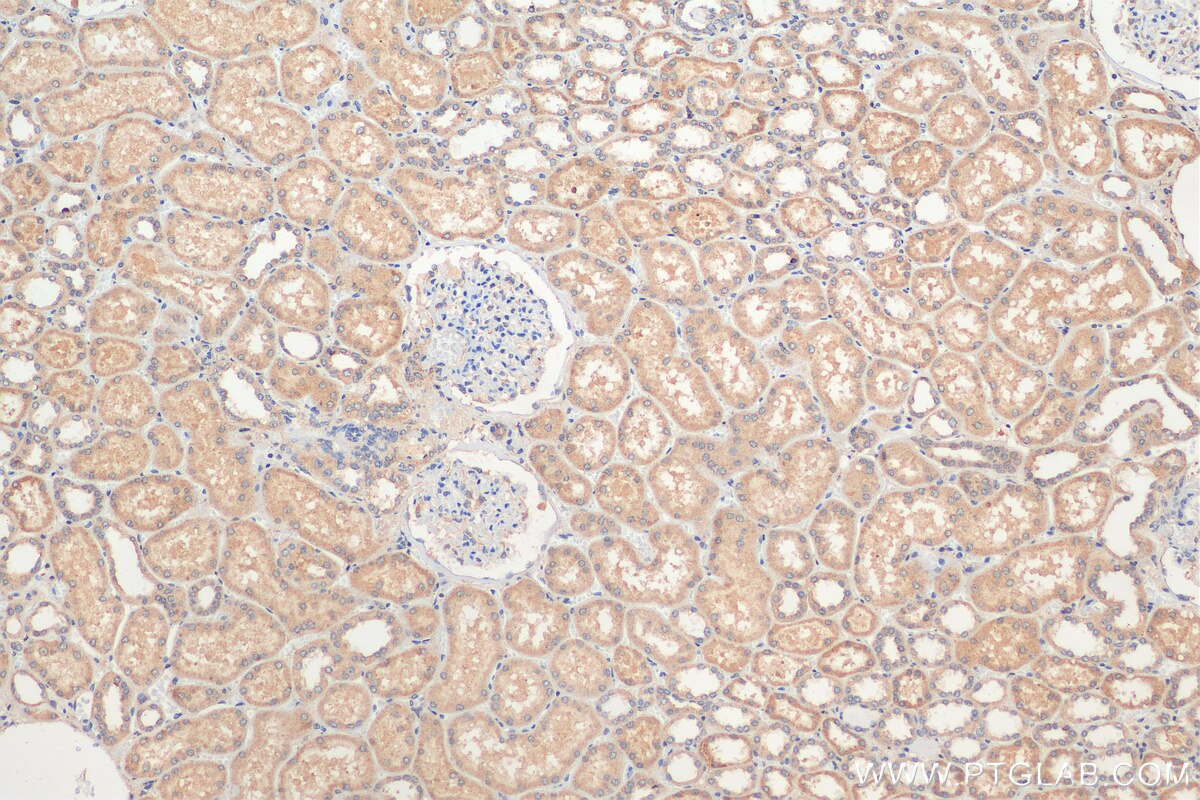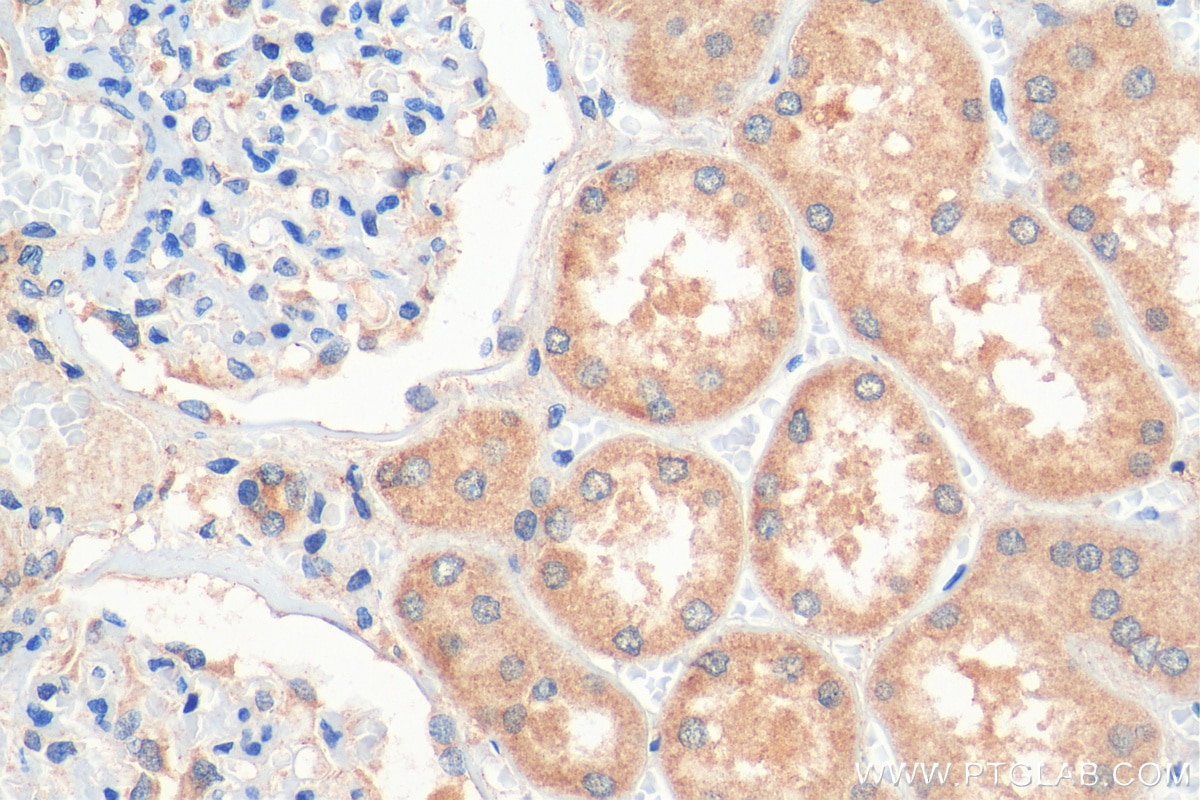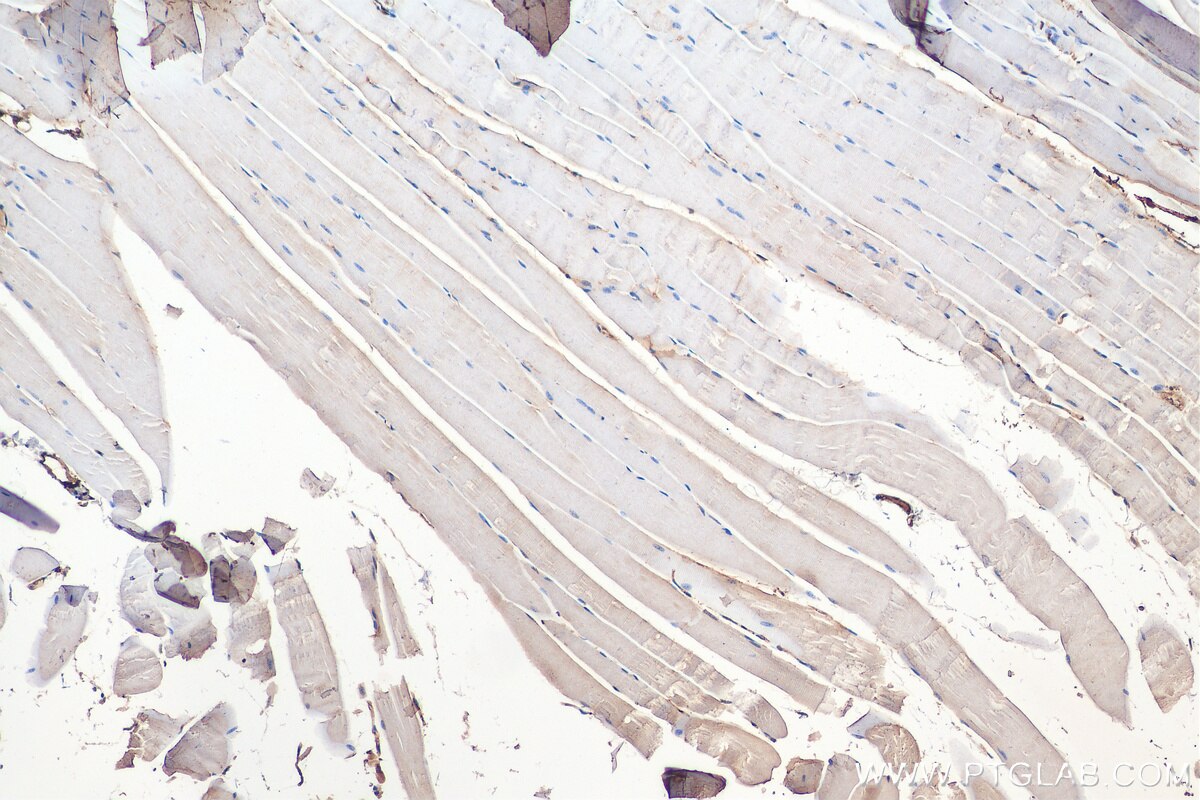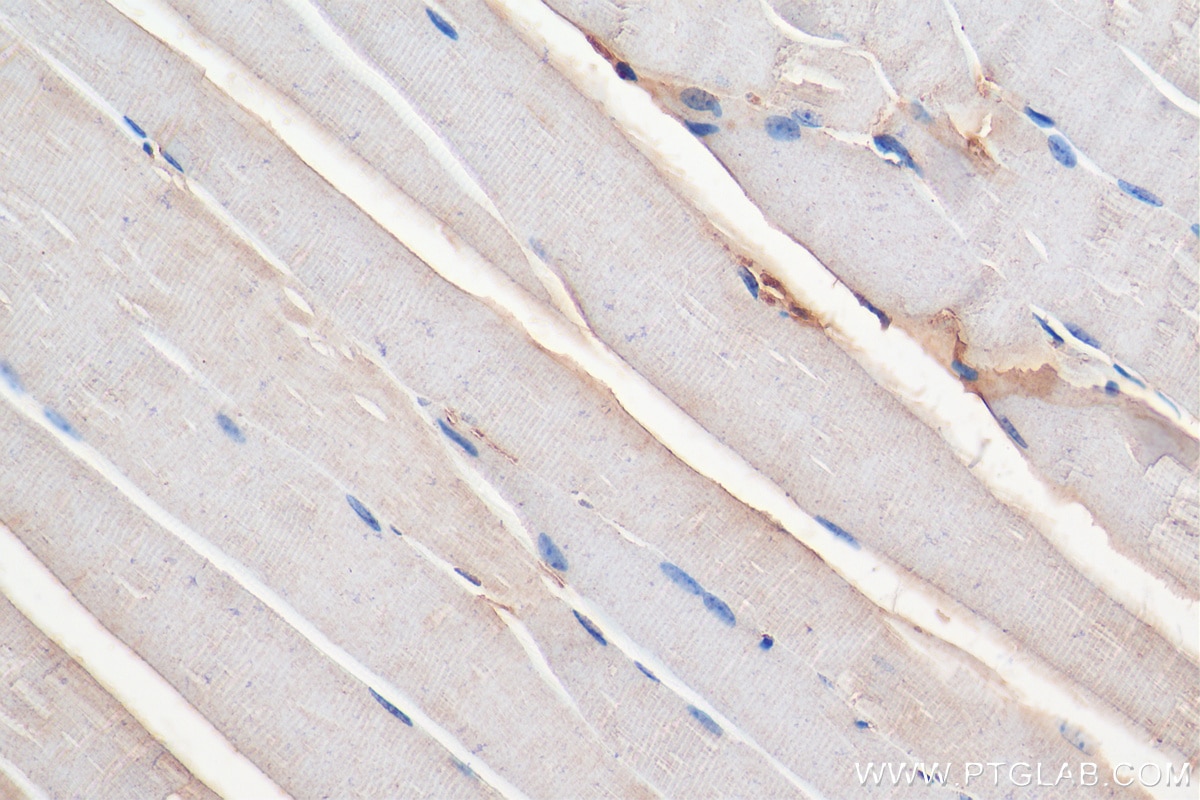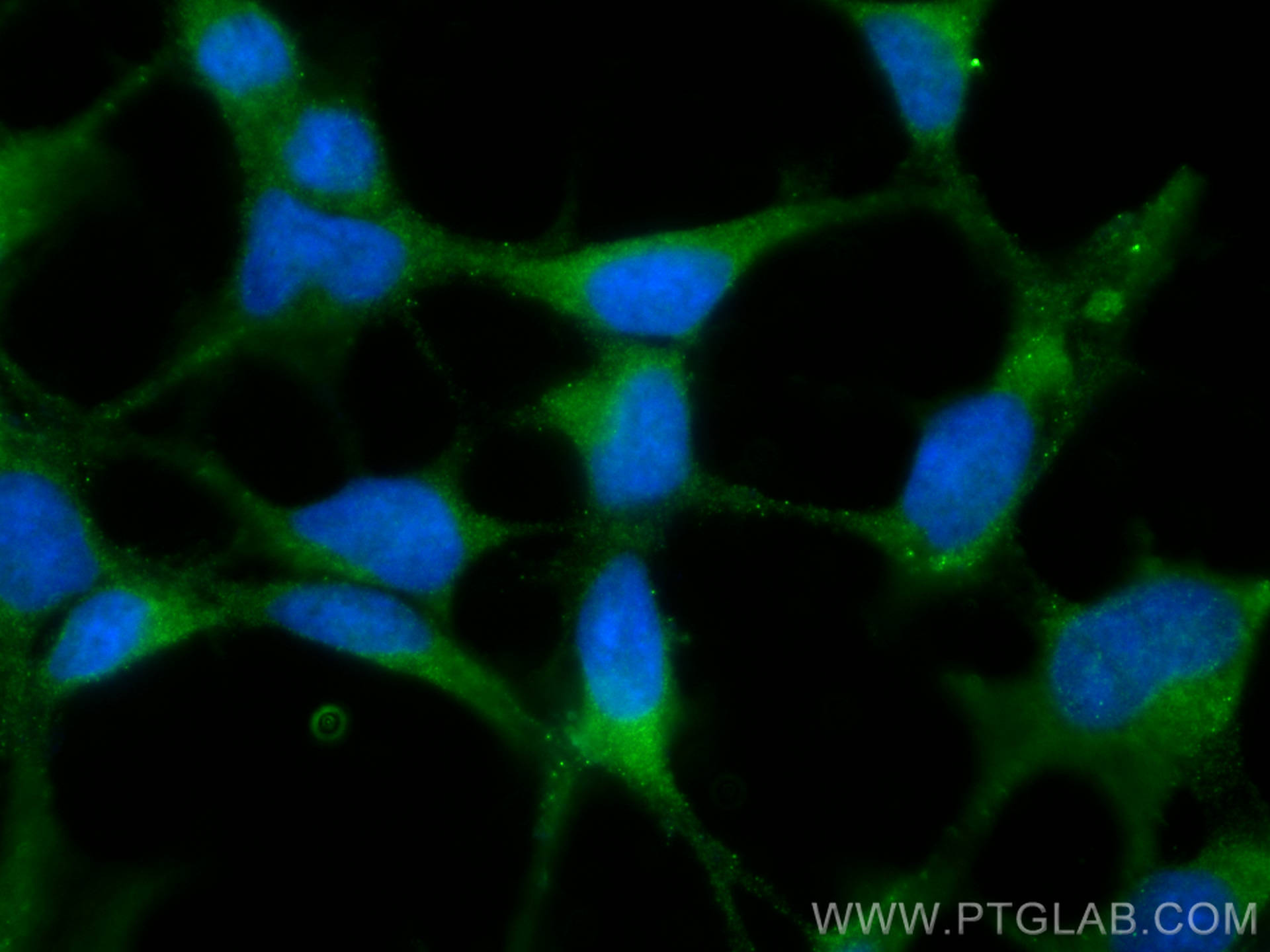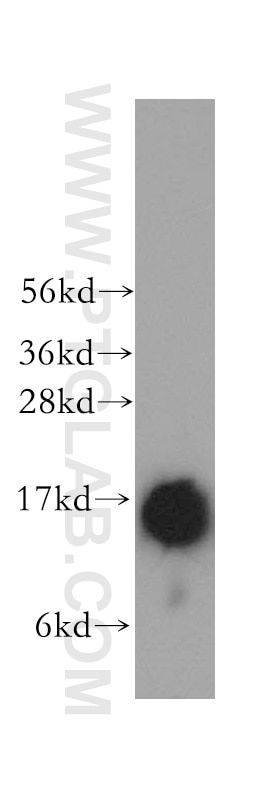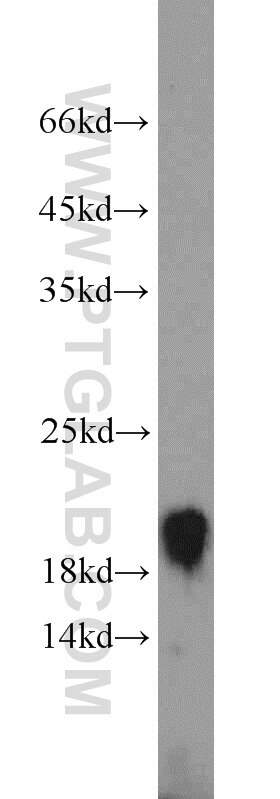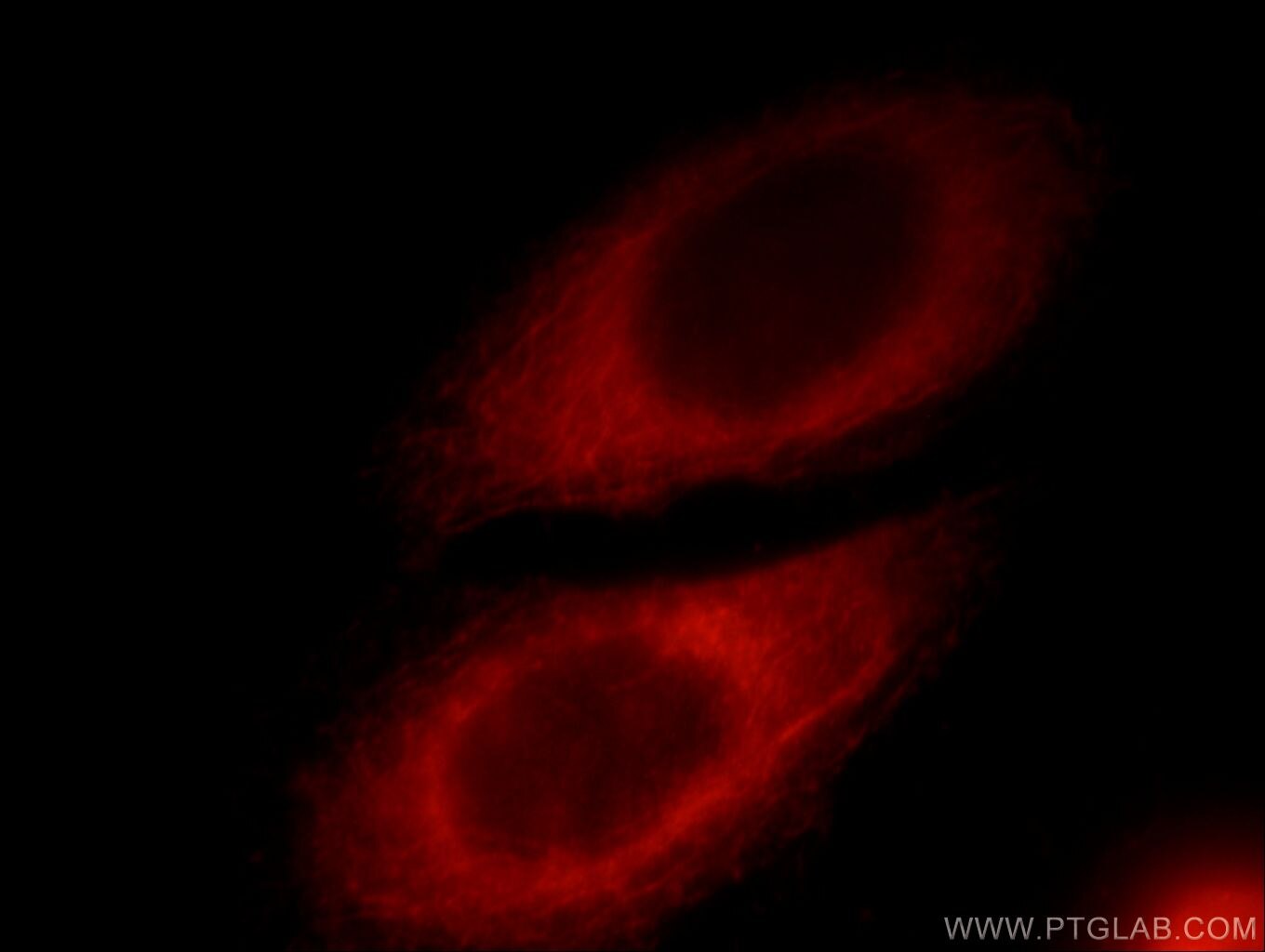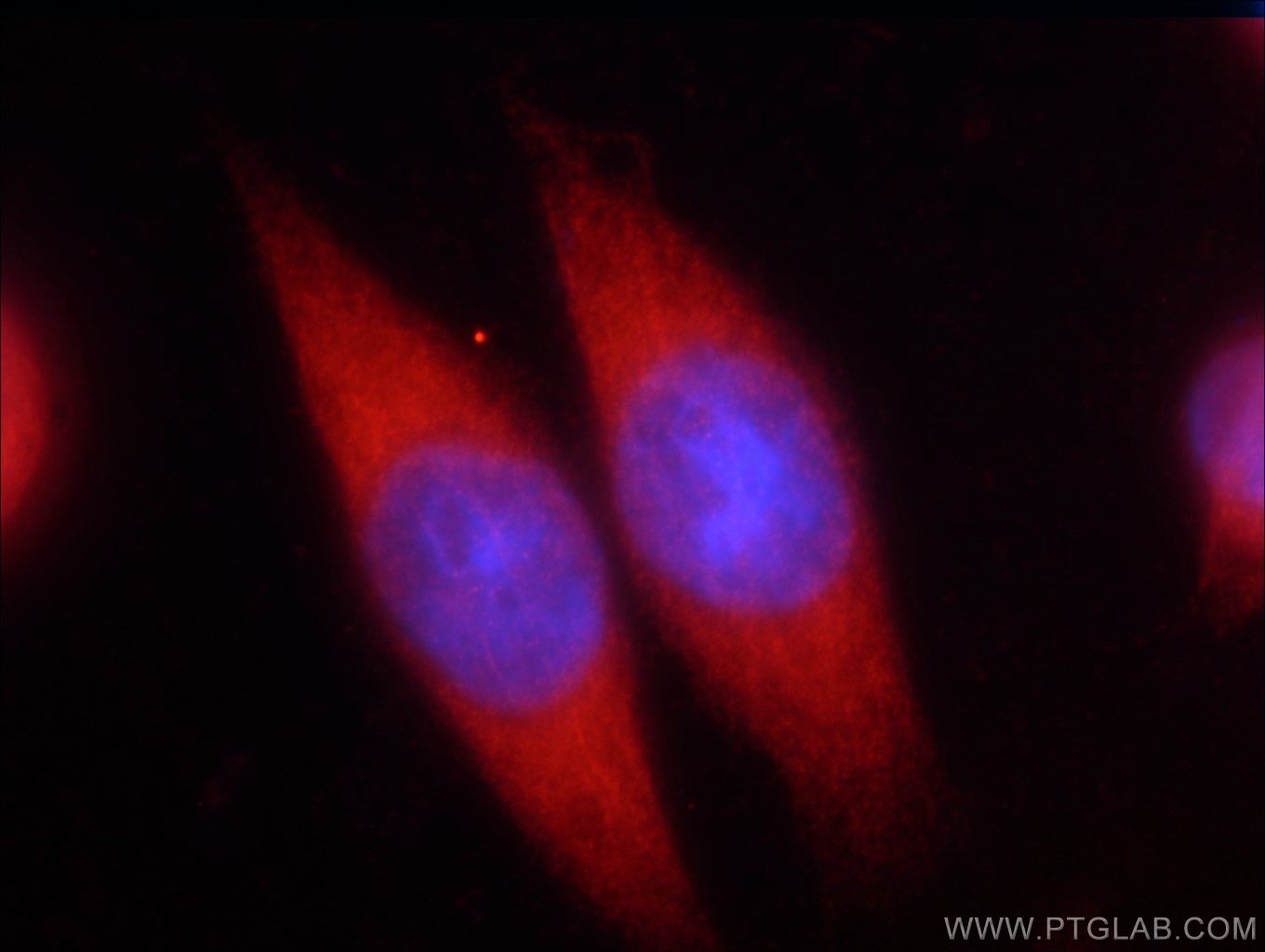- Phare
- Validé par KD/KO
Anticorps Polyclonal de lapin anti-TRAPPC9, NIBP
TRAPPC9, NIBP Polyclonal Antibody for WB, IP, IF, IHC, ELISA
Hôte / Isotype
Lapin / IgG
Réactivité testée
Humain, rat, souris et plus (1)
Applications
WB, IHC, IF/ICC, IP, CoIP, ELISA
Conjugaison
Non conjugué
N° de cat : 16014-1-AP
Synonymes
Galerie de données de validation
Applications testées
| Résultats positifs en WB | tissu cérébral de souris, |
| Résultats positifs en IP | tissu cérébral de souris |
| Résultats positifs en IHC | tissu rénal humain, tissu de muscle squelettique de souris il est suggéré de démasquer l'antigène avec un tampon de TE buffer pH 9.0; (*) À défaut, 'le démasquage de l'antigène peut être 'effectué avec un tampon citrate pH 6,0. |
| Résultats positifs en IF/ICC | cellules HEK-293, |
Dilution recommandée
| Application | Dilution |
|---|---|
| Western Blot (WB) | WB : 1:500-1:1000 |
| Immunoprécipitation (IP) | IP : 0.5-4.0 ug for 1.0-3.0 mg of total protein lysate |
| Immunohistochimie (IHC) | IHC : 1:50-1:500 |
| Immunofluorescence (IF)/ICC | IF/ICC : 1:50-1:500 |
| It is recommended that this reagent should be titrated in each testing system to obtain optimal results. | |
| Sample-dependent, check data in validation data gallery | |
Applications publiées
| KD/KO | See 3 publications below |
| WB | See 9 publications below |
| IHC | See 2 publications below |
| IF | See 6 publications below |
| IP | See 1 publications below |
| CoIP | See 1 publications below |
Informations sur le produit
16014-1-AP cible TRAPPC9, NIBP dans les applications de WB, IHC, IF/ICC, IP, CoIP, ELISA et montre une réactivité avec des échantillons Humain, rat, souris
| Réactivité | Humain, rat, souris |
| Réactivité citée | Humain, poisson-zèbre, souris |
| Hôte / Isotype | Lapin / IgG |
| Clonalité | Polyclonal |
| Type | Anticorps |
| Immunogène | TRAPPC9, NIBP Protéine recombinante Ag8791 |
| Nom complet | trafficking protein particle complex 9 |
| Masse moléculaire calculée | 139 kDa |
| Poids moléculaire observé | 128-140 kDa |
| Numéro d’acquisition GenBank | BC006206 |
| Symbole du gène | NIBP/Trappc9 |
| Identification du gène (NCBI) | 83696 |
| Conjugaison | Non conjugué |
| Forme | Liquide |
| Méthode de purification | Purification par affinité contre l'antigène |
| Tampon de stockage | PBS avec azoture de sodium à 0,02 % et glycérol à 50 % pH 7,3 |
| Conditions de stockage | Stocker à -20°C. Stable pendant un an après l'expédition. L'aliquotage n'est pas nécessaire pour le stockage à -20oC Les 20ul contiennent 0,1% de BSA. |
Informations générales
TRAPPC9, also named KIAA1882 and NIBP, belongs to the NIBP family. It functions as an activator of NF-kappa-B through increased phosphorylation of the IKK complex. TRAPPC9 may function in neuronal cell differentiation and play a role in vesicular transport from the endoplasmic reticulum to the Golgi. TRAPPC9 was found in neurons of the cerebral cortex, hippocampus, and deep gray matter. Western blotting indicates the molecular weight of TRAPPC9 is 130-140 kDa, and 250 kDa may be detected with extensive posttranslational modification of TRAPPC9.
Protocole
| Product Specific Protocols | |
|---|---|
| WB protocol for TRAPPC9, NIBP antibody 16014-1-AP | Download protocol |
| IHC protocol for TRAPPC9, NIBP antibody 16014-1-AP | Download protocol |
| IF protocol for TRAPPC9, NIBP antibody 16014-1-AP | Download protocol |
| IP protocol for TRAPPC9, NIBP antibody 16014-1-AP | Download protocol |
| Standard Protocols | |
|---|---|
| Click here to view our Standard Protocols |
Publications
| Species | Application | Title |
|---|---|---|
Proc Natl Acad Sci U S A Primary cilia membrane assembly is initiated by Rab11 and transport protein particle II (TRAPPII) complex-dependent trafficking of Rabin8 to the centrosome. | ||
Int J Biol Sci Defective neurite elongation and branching in Nibp/Trappc9 deficient zebrafish and mice | ||
EMBO Rep TRAPPC1 is essential for the maintenance and differentiation of common myeloid progenitors in mice | ||
J Biol Chem The C7orf43/TRAPPC14 component links the TRAPPII complex to RABIN8 for preciliary vesicle tethering at the mother centriole during ciliogenesis.
| ||
Tumour Biol NIK- and IKKβ-binding protein promotes colon cancer metastasis by activating the classical NF-κB pathway and MMPs. |
